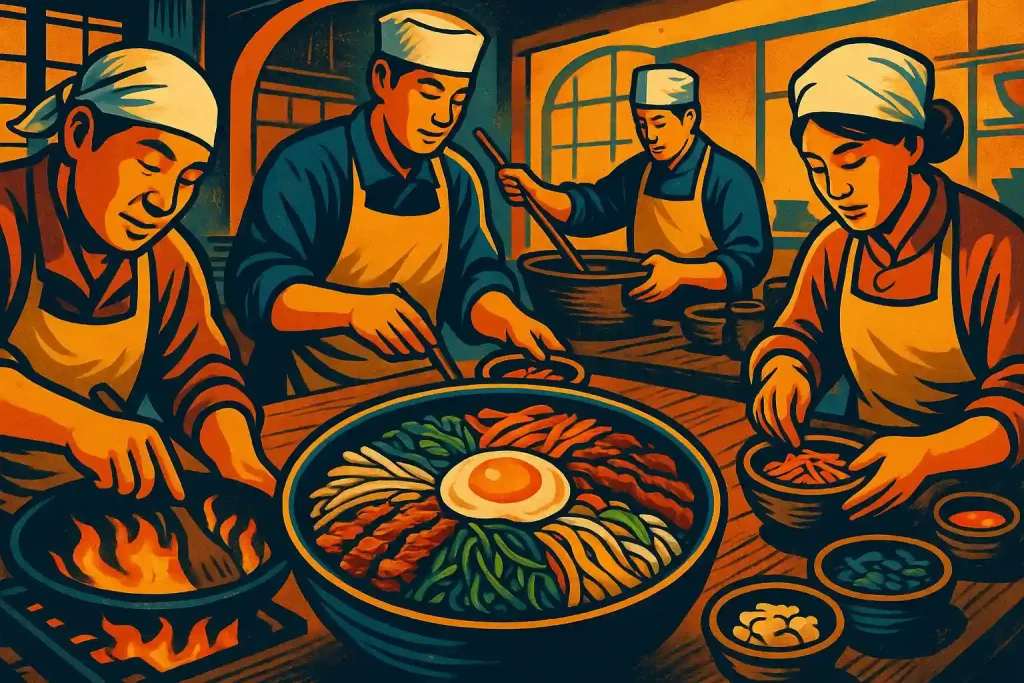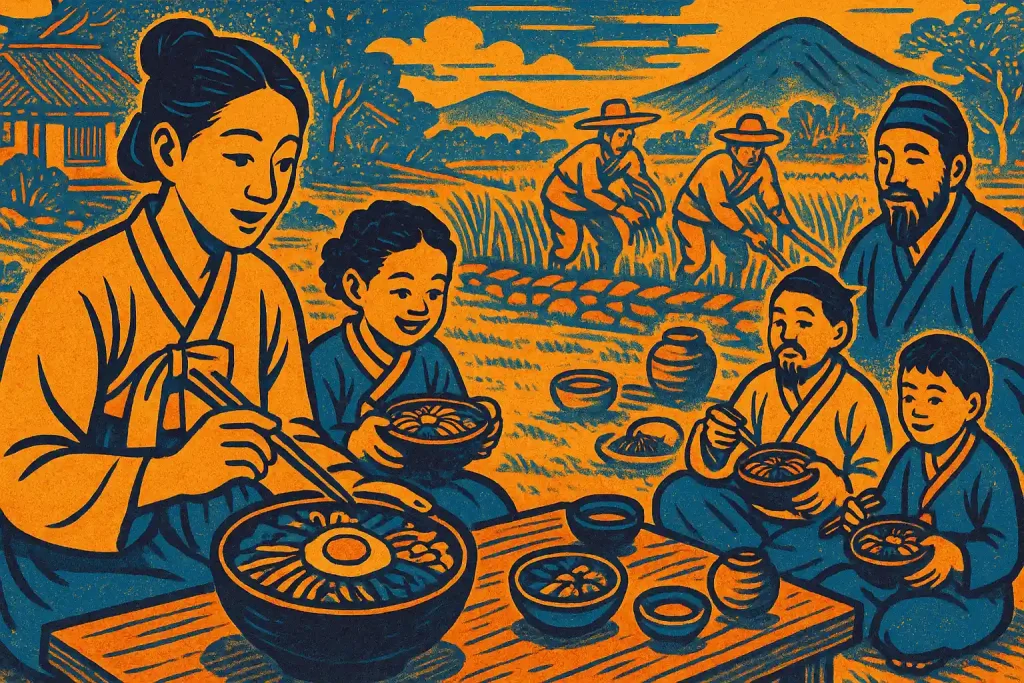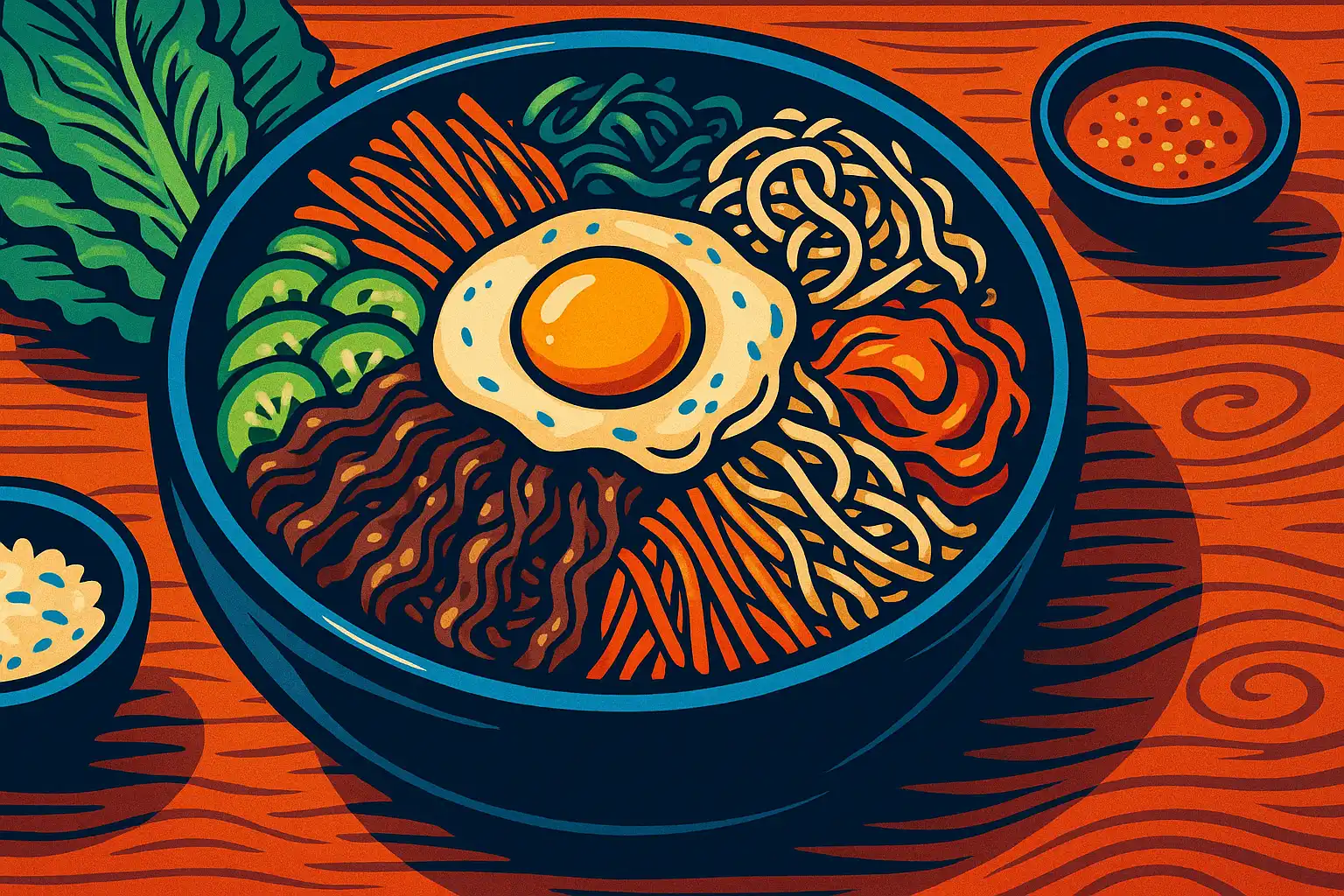The question “What Is Bibimbap” often comes up when people explore Korean cuisine. The food is one of the most iconic Korean dishes and a word that appears frequently in food glossaries and cultural discussions. This mixed rice dish represents balance, nutrition, and visual beauty, making it a key concept in any food dictionary.
Understanding the Korean food is important because it highlights the values of Korean culture such as harmony, community, and wellness. The dish also connects food to broader traditions. From its symbolic colors to its method of preparation, it is more than just a meal. It is a cultural expression that has crossed borders, appearing on international menus and becoming a favorite among those who want to experience authentic Korean food.
This blog defines the food, explains its meaning, explores its history, and describes its uses in both traditional and modern contexts.
Meaning and Description

The term bibimbap comes from the Korean words “bibim” (to mix) and “bap” (rice). In dictionary terms, the definition of the dish refers to a dish consisting of rice topped with assorted vegetables, meat, egg, and chili pepper paste (gochujang). Before eating, the ingredients are mixed together, creating a balance of flavors and textures.
Synonyms or variations used in the culinary context include “Korean mixed rice” or “rice bowl with toppings.” However, these terms do not fully capture the cultural essence of bibimbap. Its definition goes beyond food; it embodies the idea of mixing different elements into harmony.
In a dictionary perspective, it is both a culinary term and a cultural concept. It is considered one of the most representative dishes of Korea. While its core meaning lies in being a rice-based dish, its broader significance reflects the Korean tradition of sharing meals and appreciating seasonal ingredients.
Thus, the definition of the dish highlights both its literal meaning and its symbolic role in cuisine.
Detailed Explanation of Bibimbap
To better understand bibimbap, it is essential to look at its components, preparation, and cultural symbolism.
Ingredients and Preparation:
A typical bibimbap bowl starts with steamed white rice. On top, a variety of seasoned vegetables such as spinach, bean sprouts, mushrooms, and carrots are added. Protein comes in the form of sliced beef, chicken, or tofu for vegetarian versions. A fried or raw egg is placed in the center, and the dish is completed with a dollop of gochujang.
Mixing and Eating:
Before eating, diners mix all the ingredients together with a spoon, blending flavors and textures. The result is a harmonious combination of sweet, spicy, salty, and savory tastes.
Symbolism:
The Korean dish is not just about taste; it symbolizes harmony. The different colors represent balance and health, echoing the traditional Korean belief in the five elements: wood, fire, earth, metal, and water.
Cultural References:
The dish often appears in Korean food festivals, celebrations, and even media such as films and dramas. It has become a symbol of Korean hospitality, where mixing ingredients together reflects unity and inclusion.
Modern Adaptations:
It has been adapted globally, with versions served in stone bowls (dolsot bibimbap) or in contemporary styles such as bibimbap salads or fusion rice bowls. Despite adaptations, the essence remains the same: variety, balance, and harmony.
Therefore, the detailed explanation of bibimbap reveals that it is more than a rice dish—it is an embodiment of cultural values, culinary art, and tradition.
History and Origin of Bibimbap

The origin of the food is rooted in Korea’s agricultural society. Historical records suggest that farmers and common households created the dish as a way to use leftover vegetables and rice, mixing them together for convenience and nutrition.
During the Joseon Dynasty (1392–1897), the food evolved into a more refined meal served in royal courts. The inclusion of various ingredients symbolized abundance and prosperity. This historical context highlights how the dish moved from simple necessity to cultural celebration.
In addition, traditional customs show that bibimbap was often prepared during ancestral rites or large gatherings. Its mixture of ingredients symbolized unity among family members.
By the 20th century, bibimbap became widely recognized as a national dish of Korea. With globalization and the Hallyu Wave, bibimbap gained international fame. It now represents not only food but also the Korean identity abroad.
The history of bibimbap demonstrates its evolution from a practical meal to a cultural symbol.
Applications and Uses of Bibimbap
It’s applications extend beyond dining. In Korea, it is a staple during festivals, holidays, and special family occasions. The dish embodies hospitality and respect for guests, making it a popular choice for communal meals.
In the restaurant industry, it plays a central role in Korean cuisine worldwide. Tourists and food enthusiasts often view it as a must-try dish. Restaurants use stone bowls (dolsot bibimbap) to enhance its appeal, creating a crispy rice layer at the bottom.
Globally, bibimbap has inspired culinary innovation. Chefs create fusion versions such as bibimbap burritos, wraps, and salads. These adaptations make it accessible while preserving its cultural essence.
It also appears in academic and cultural discussions. Food scholars use it to illustrate how meals represent traditions and values. In this way, it becomes more than a dish; it is a teaching tool in gastronomy and cultural studies.
From an economic perspective, bibimbap contributes to Korea’s food exports. Packaged bibimbap kits and ready-to-eat meals are sold in international markets, allowing people worldwide to enjoy it conveniently.
As a result, bibimbap’s uses go beyond being a simple meal. It is a cultural export, an educational resource, and a culinary innovation.
Conclusion
Bibimbap is more than just a colorful rice bowl—it is a living expression of Korean culture, history, and philosophy. From its humble beginnings in agricultural communities to its recognition as a global culinary icon, bibimbap reflects values of balance, unity, and wellness. Its versatility allows it to adapt to modern tastes while preserving its deep cultural roots. Whether enjoyed in a traditional stone bowl or in creative international variations, bibimbap continues to connect people through food, offering not only nourishment but also a taste of Korea’s identity and heritage.
Resources
- Food South Korea – Korea Food Guide: What To Eat In South Korea
- Maangchi – Bibimbap Recipe
- UNESCO – Intangible Cultural Heritage – Korean Cuisine
- National Geographic – Everything you need to know about bibimbap, Korea’s famous rice dish
- The Korea Herald – Bibimbap’s Global Rise

